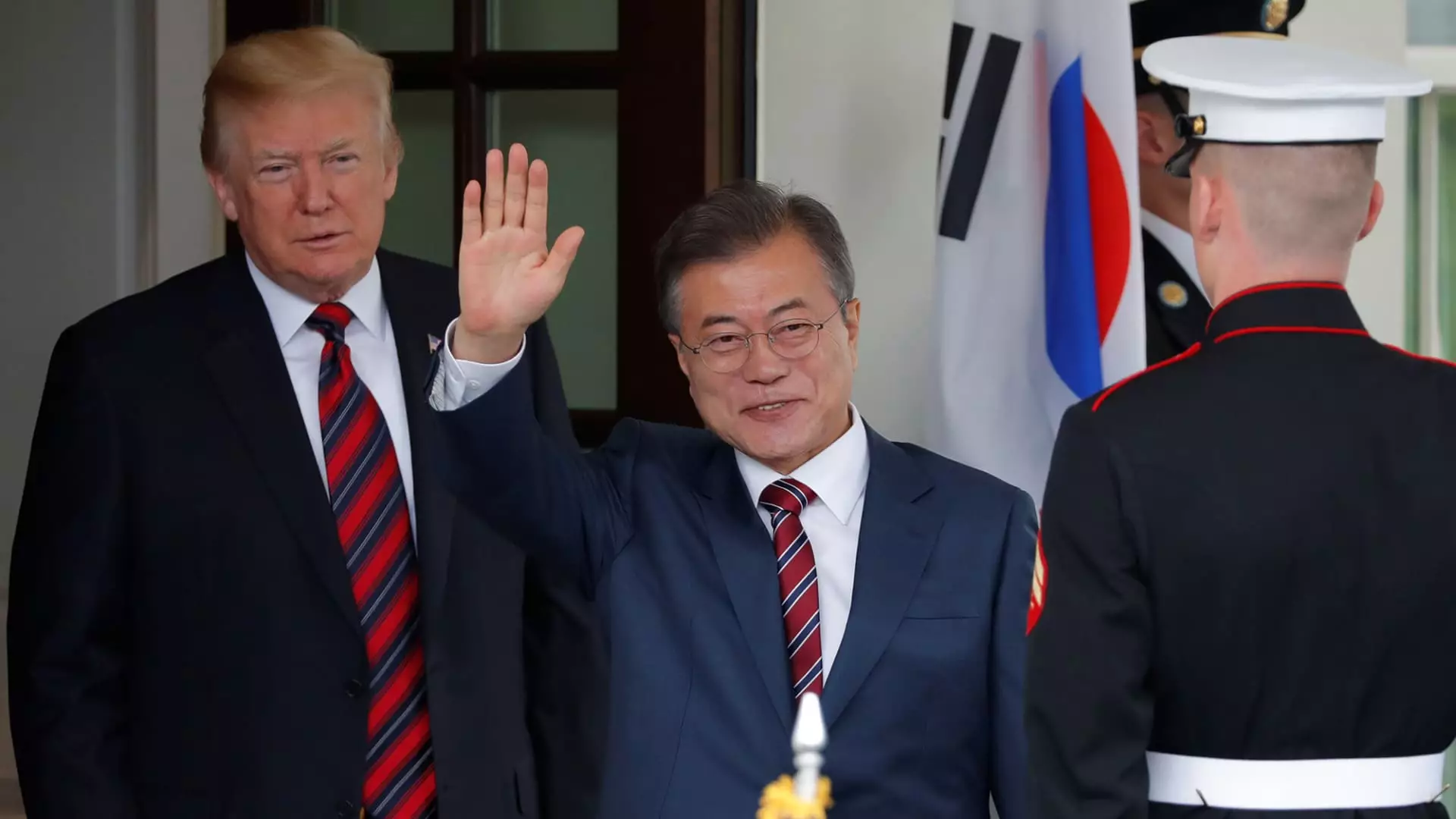As the specter of increased tariffs looms over the United States, particularly during the Trump administration’s latest economic maneuvers, the automotive industry stands at a critical crossroads. The proposed tariffs primarily aim at international trading partners, with South Korea and Japan poised to bear the brunt of these potential tax increases. This indirect assault on foreign markets could drastically reshape the competitive landscape of the U.S. automotive sector, necessitating a thorough analysis of its implications for manufacturers.
In 2024, vehicles imported from East Asian countries were responsible for 16.8% of cars sold in the United States, a notable figure reflecting their significant presence in the American auto market. South Korea’s production has surged, constituting 8.6% of these sales, while Japan’s share has slightly decreased to 8.2%. This decline in Japan’s automotive export strength underscores a broader trend where historical leaders like Toyota and Honda might face renewed challenges from their South Korean counterparts, such as Hyundai, which have flexibly navigated trade agreements to their benefit.
At the core of tariff imposition lies the economic principle that these taxes often get passed on to consumers. The net effect of increased tariffs on imports would invariably lead to heightened prices for vehicles, dampening demand as customers reconsider their buying options. Such a market adjustment cycle can be detrimental, particularly as consumers weigh the added costs against the value proposition offered by automakers.
Tariffs also impose a structural burden on the supply chain, which is intricately interwoven across borders. For instance, while South Korean automakers currently enjoy zero tariffs on vehicle exports to the U.S., a shift to a 10% or greater tax could lead to margin erosion not just for companies like Hyundai but also for invested U.S. manufacturers such as General Motors (GM). The possibility of increased operational costs can quickly become a challenge to profitability and strategic growth initiatives.
Furthermore, GM’s rising engagement with South Korean production facilities—evident in its recent expansion of vehicle exports from South Korea—showcases a growing dependency on foreign supply chains that could face significant disruption if tariffs are levied.
Despite Japan’s long-standing automotive prowess, data suggests a worrying trend: a decrease in its market share within the U.S. automotive sector. Approximately 1.31 million vehicles sold in the U.S. last year came from Japan, but this figure has experienced a decline over the years. The Japanese automotive giants now grapple with a dual pressure—import tariffs as low as 2.5% and heightened competition from South Korean exports, which are rapidly gaining ground.
Conversely, the trade deal renegotiation between the U.S. and South Korea in 2018 failed to produce substantial improvements for U.S. automotive export levels into South Korea, indicating that trade agreements must yield mutual benefits rather than merely appeasing one side of the negotiation table. This imbalance further complicates the operational calculus for Japanese automakers as they navigate shifting policy terrains.
Industry experts and executives have underscored the urgency of adopting a cohesive strategy towards tariff policies. Ford’s CEO, Jim Farley, has articulated a need for a comprehensive approach to automotive tariffs, suggesting that arbitrary targeting of specific countries may further distort competition and create an uneven playing field.
The sentiments shared by Terence Lau, a law dean and former trade expert, reiterate the automotive industry’s inherent resilience. Lau’s insights affirm that this sector can adapt over time to incremental changes in tariff structures, though substantial shifts, especially those exceeding 10%, can hinder progress and innovation initiatives.
The White House remains reticent on concrete details regarding the implementation of these tariff policies. The uncertainty built into this economic landscape could exacerbate unrest among businesses that depend heavily on the free flow of goods across borders, showcasing the fine line that policymakers must walk between protecting domestic interests and fostering a flourishing global trade environment.
The impending tariff discussions serve as a pivotal point for manufacturers, notably within the automotive landscape. It challenges automakers to reassess their strategies concerning production, pricing, and market engagement. As companies prepare for the potential repercussions of these tariffs, the broader implications for consumers, manufacturers, and international relationships continue to unfold, laying bare the intricate connections of global commerce in the automotive sector. The road ahead suggests a complex interplay of economic interests that may very well redefine the future of the industry.

